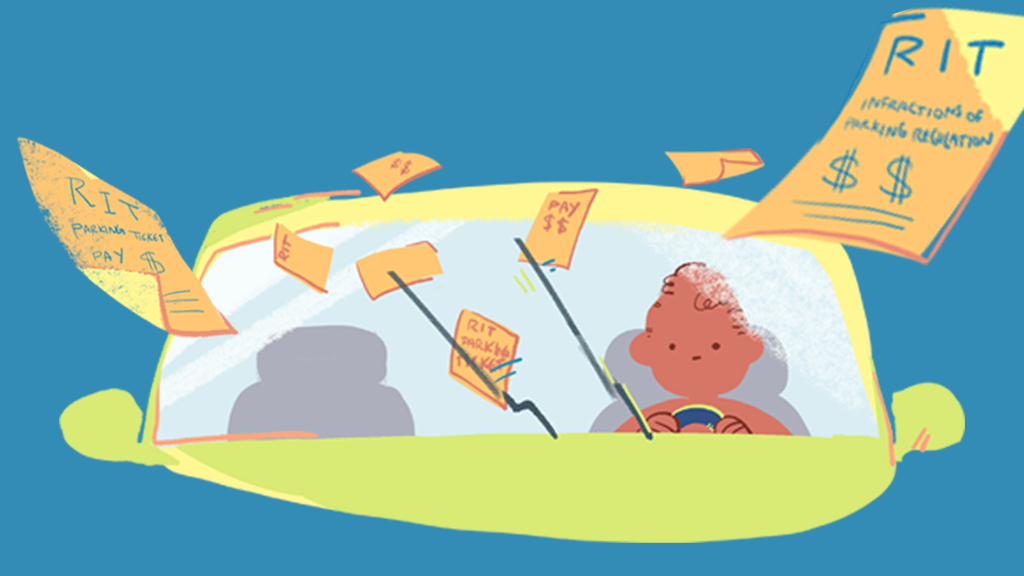In December 2015, a Reporter article broke the story that Public Safety would soon begin to carry firearms. Obviously, students raised several concerns about the change and then-President Destler even sent out a letter addressing the policy. To relieve concerns about Public Safety having the potential to use “deadly force,” then-Director Chris Denninger also sat down for a one on one Q and A to address the topic in 2016.
Does Public Safety Have Guns?
It has been two years and RIT hasn’t provided any additional information on the policy or confirmation about whether it has been implemented. The full extent of the policy also remains a mystery. Will firearms truly just be reserved for active shooter scenarios, or will guns be weaved into the day-to-day operations of Public Safety?
“There are no plans for firearms outside of active shooter scenarios,” said Gary Moxley, current director for Public Safety.
“There are no plans for firearms outside of active shooter scenarios”
Moxley is the former captain for the Rochester Police Department and has 12 years of experience as a SWAT team member for the station. He joined RIT’s Public Safety team in 2016 and served as the assistant director. After Denninger’s retirement in 2017, Moxley was promoted to be the department’s director with the specific aim to implement the Special Emergency Response Team (SERT) program. Moxley stressed that the program would not affect students’ relationships with the officers.
Talks for the program began as a response to the uptick of violent mass shootings at schools. According to data compiled by CNN, there’s an average of one school shooting per week in America. This average is 57 times higher than other developed countries. The increase of violence on school grounds, coupled with RIT’s “open campus” layout, makes the campus particularly vulnerable to mass casualties.
“The days of saying, ‘It’ll never happen here’ are over,” Moxley said.
How Were the Officers Trained?
A select few officers were trained to be part of the response team in the event of a mass shooter. The specific number of officers authorized to use lethal force and the exact grade of firearm they will be using is classified. However, Moxley would like to ensure students that no Public Safety officer will be carrying a handgun. The unnamed firearms are SAFE Act-compliant. The SAFE Act, or Secure Ammunition and Firearms Enforcement Act, is a law in New York state that limits the type of firearm a person can carry if they are not a sworn officer.
The Public Safety officers involved in the program went through a number of training programs before becoming official members of SERT. The training included, but was not limited to, annual anti-bias training, a one-time psychological exam, Stop the Bleed initiative training to administer first aid and firearms training at the Monroe County Rifle School. A firearm is issued to each officer and is locked in a state-of-the-art, fingerprint-only access safe. This makes each weapon traceable back to the holder. According to Moxley, no weapon will be accessed at all unless there’s a “confirmed” active shooter.
“We’ll know when there’s an active shooter … through phone calls, eye witnesses or 911 operators,” Moxley said.
He also pointed out RIT’s arsenal of over 700 security cameras as an additional tool to make sure the campus is safe.
As part of their training, officers also engaged in drills, role-playing the event of an active shooter. This special training is done at an off-campus location equipped with classrooms, crisis actors, simulation rounds, a stand-in “active shooter” and more. Moxley was quizzed on the possibility of performing active shooter drills again, but with actual RIT students.
Moxley responded, “We’re not there yet.”
He did, however, seem open to performing a full lockdown drill in the future.
What Is the Effect on Students?
Active shooter drills began in schools after the much-publicized 1999 Columbine shooting. Although emergency drills for natural disasters have been in effect for a long time, active shooter drills have a unique effect on students’ psychology. Meredith Corley, who taught math in the wake of the Columbine tragedy, told The Atlantic about her experience.
“Getting the kids settled back into the work of learning after lockdown drills is a nightmare. That mindset has no place in a learning environment,” she said.
Active shooter drills are controversial for this exact reason. It heightens students’ stress and anxiety and is majorly disruptive to learning. The potential for psychological harm is also why RIT has been hesitant to begin these drills on students.
“We don’t want our students to be afraid,” Moxley said.
The militarization of Public Safety is a valid concern. RIT wanting an effective counter-measure to mass casualty scenarios is also understandable. The Las Vegas shooting was the largest mass shooting in our nation’s history, leaving 58 dead and 489 wounded, despite lasting only 10 minutes, according to USA Today. Moxley’s goal with the SERT program is to be that little buffer between the initial gunshots and the police officers’ response, because in a mass shooting, every second matters.
“We always consider the needs of our students, but the need to protect our students in mass casualty situations is more important,” Moxley said.
What Can We Do Now?
It is easy to feel helpless in these scenarios; however, there are options for students who want to do more.
For one, they can become more familiar with the TigerSafe app. There are many useful features such as the full campus map, the Friend Walk that sends a Public Safety officer to walk you home and the Mobile Blue Light that sends your location to Public Safety. The most relevant feature might be the “Say Something” button that allows students to report tips to Public Safety. Signing up for first aid or “Stop the Bleed” training is another resource for students who want to help during a mass casualty incident.
As always, students should hold the administration and Public Safety accountable for their actions. If students ever feel that SERT has overstepped their bounds, Moxley encourages students to speak up. The SERT program shouldn’t have to exist, but since it does, we as students can take responsibility to keep our campus safe for each other.






